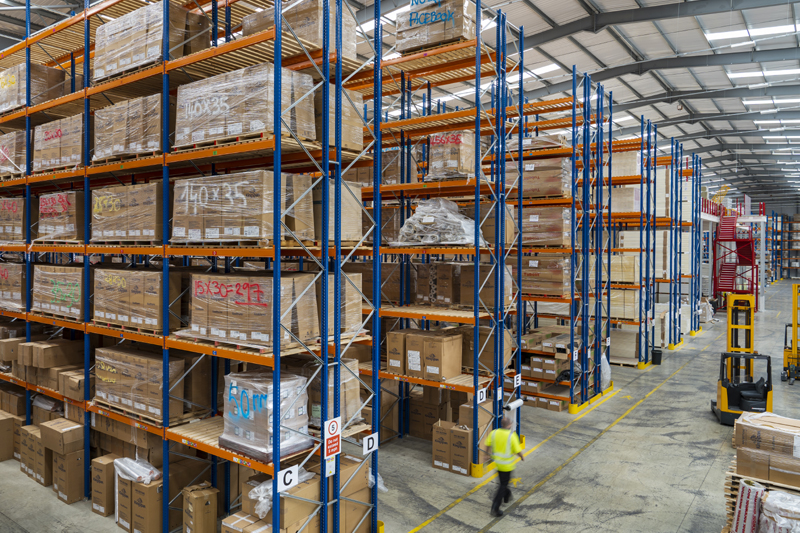
With one of the largest product portfolios in the market, distributor SIG has a front-row seat in the drama of stock availability and pricing. Damian Royds, Director of Category and Duncan Winter, Divisional Managing Director, take a look at where the market is headed.
It looks increasingly as though the economics of the construction industry have changed for the foreseeable future. We had got used to low price inflation, low interest rates and — barring the COVID hiatus — to consistent demand fuelled by a strong housing market. And now it’s all change.
The start of this year saw product supply issues fuelling price increases, which accelerated with the start of the war in Ukraine and the immediate impact on energy costs. Back in the spring we were starting to see double-digit price rises from manufacturers with some only holding prices for 24 hours. It was hectic.
Stock pressure eases
Now, in the autumn, the picture is changing again. There is less pressure on stock — and for a variety of reasons. Some manufacturers have increased production volume, and transport pinch-points —particularly around the channel ports — have eased. However, as we head in to winter it is difficult to avoid the suspicion that demand is gradually softening.
Price rises
There’s no softening on prices, though. Fuel costs (particularly gas) are the main driver and the product groups that use most energy in manufacture — insulation, masonry and plasterboard, for example — will be the most severely affected.
Most manufacturers will hedge their gas purchases, but those hedged deals will be up for renegotiation in October / November and consequently many manufacturers are introducing double digit price increases again for the New Year.
So far, this was all relatively predictable but the big additional challenge that we weren’t expecting is around currency exchange. The sudden and dramatic fall in the value of the pound against the US Dollar and the Euro is adding further pain.
The problem is unfortunately not confined to products manufactured within these territories. Various raw materials and products originating from outside these areas are traded in US Dollars, so the latest exchange rate issues will impact on their pricing too.
“It’s easy to be pessimistic, but there are windows of opportunity, particularly around the drive to reduce carbon emissions and fuel consumption.”
Gas supplies
Is there any sign of price inflation easing? Right now, I don’t think anyone would be brave enough to call that one. Energy supplies could stabilise and the gas price could fall. Most European countries are hastening their move away from reliance on Russian gas supplies and are accelerating any gas production that they can, but this will take time and any further restriction on gas supplies will only cause more price hikes.
It’s easy to be pessimistic, but there are windows of opportunity, particularly around the drive to reduce carbon emissions and fuel consumption.
Finding alternatives
Some economists are predicting that even when wholesale gas prices start to fall, we will not see retail prices follow suit. Governments across the world are starting to view gas as a transitional energy source to be replaced by newer, greener technology.
If that’s the case, then look out for an explosion in low carbon, energy saving and energy generating technologies and a renewed focus — possibly supported by government action — on retrofitting.
This is one priority area for SIG. We have our own focus as an organisation on reducing our operational carbon emissions and we have also started to increase our range of sustainable products and systems — our PV panels have been in strong demand this year, for example.
But also, with our ability to open routes to market quickly, we are in the position to develop sustainable products within the market, working with innovative new suppliers. We anticipate a gradual roll-out of products with high percentage of recycled content, low embodied energy and exceptional performance.

Our category experts are in the best position to select and evaluate new products, with informed insight into likely market demand.
Into the New Year, if we see decreasing demand combined with greater stock availability, then we may see a greater focus on innovation. When manufactures are focused on trying to meet demand for volume products they tend to have less capacity for niche products with specialist performance. With less pressure on stocks we should see manufacturers ramping up their production of specialist products.
None of this is going to be comfortable. There will be huge pressure on contractors working to fixed price contracts and SMEs, with their limited buying power, will be right in the spotlight.
Keeping up with compliance
Sitting in the middle of the supply chain, SIG will be looking to support its merchant customers not only with competitive pricing, but also with a huge range of options with customer service as a priority.
We also provide support with the tricky issue of compliance. Keeping up to date with the status of performance testing and legal compliance of a vast range of products is a challenge. SIG, with its SIG Assured service and growing Compliance Team, is making the whole process easier by ensuring that all product documentation is available in one place for all the lines we carry.
We can’t recommend the suitability of products for specific applications, but we can provide up to date product information which has been checked by our Compliance Team. In a challenging market, where cost is the number one consideration, it’s all too easy for substandard products to creep into the supply chain.
Fast reactions
Businesses will need to be reactive and nimble to negotiate the current turbulence. It’s probably a given that the days of low inflation and intense demand are gone for a while, but in a challenging market there is room for creative thinking, excellent service and strong innovation to cut through.
Click here for more information on the range of products and support services available via SIG.

A version of this article appeared in the November edition of Professional Builders Merchant. Click here to read the digital version of the issue, via the PBM website.









